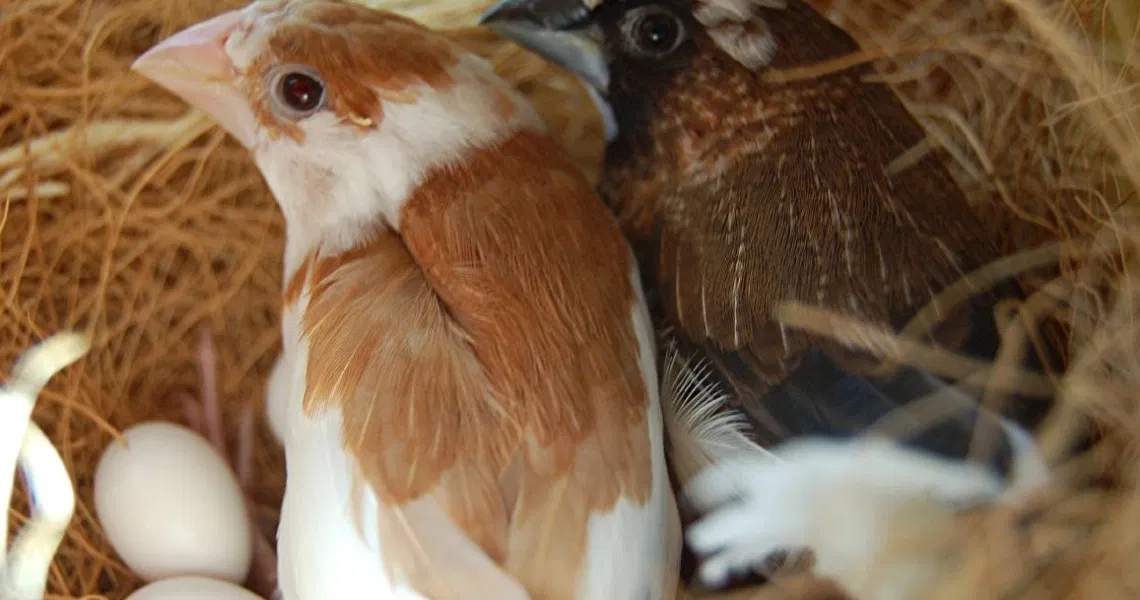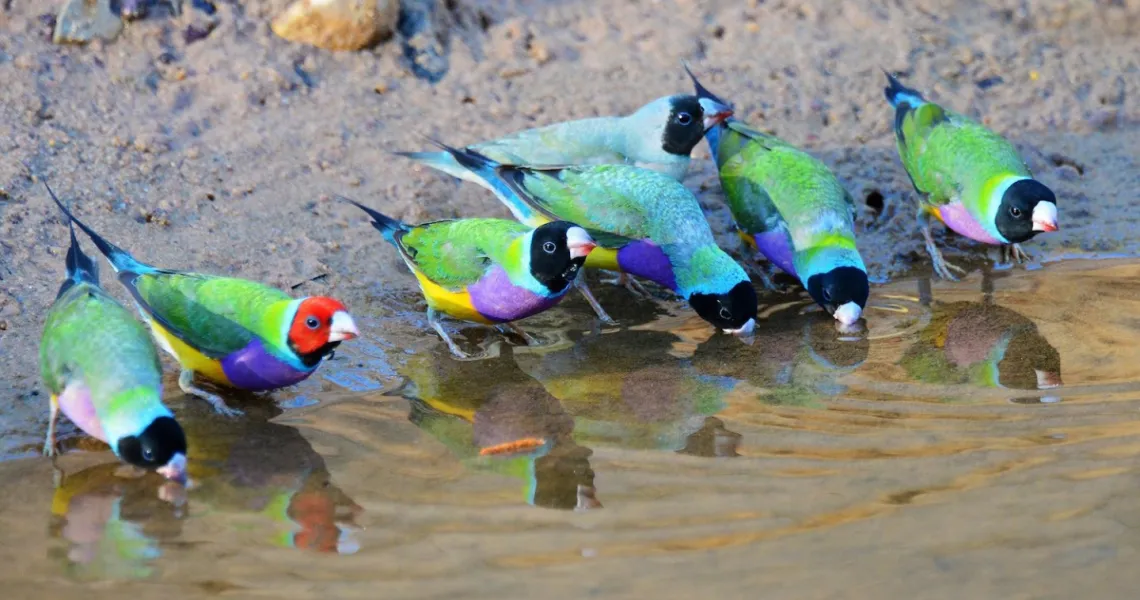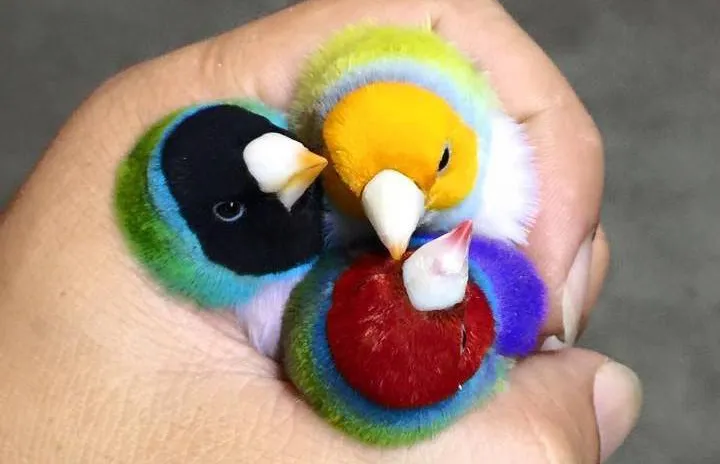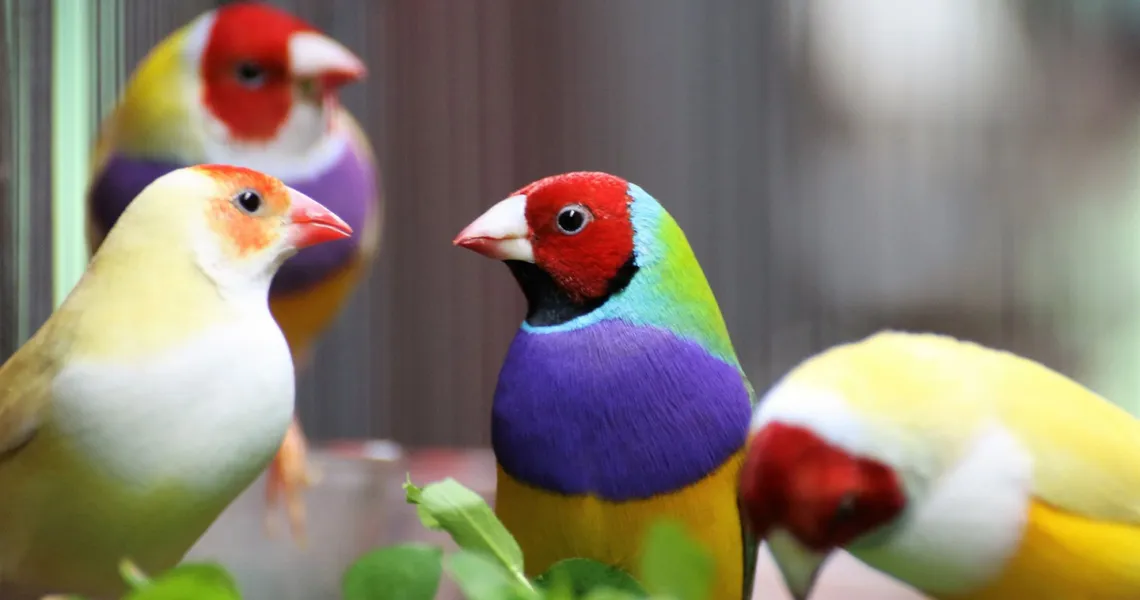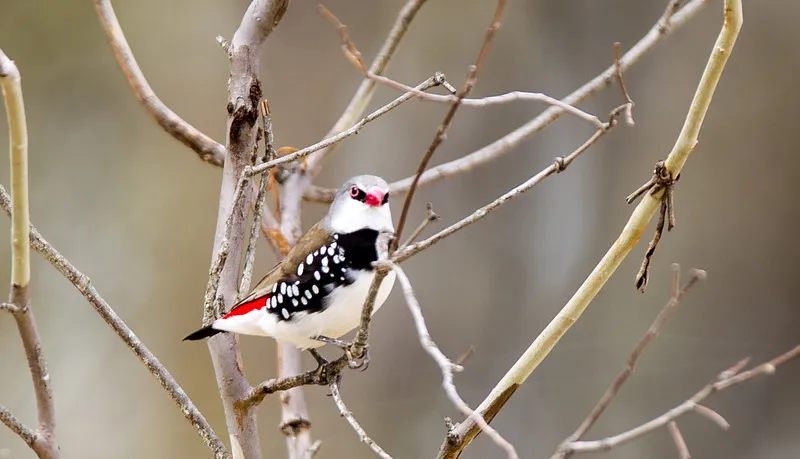
The Life of Diamond Firetail Finches: From Wild Habitats to Captivity
By longnkp / Jul 10 2024 / General
Diamond Firetail is a species of finch endemic to Australia, measuring between 10 to 12 cm in length, weighing around 17 grams, with distinctive white spots on a black background running along the sides. The beak, eye rings, and tail tip are bright red. The throat and belly are white, separated by a black bib. The Diamond Firetail typically has a gray head and brown wingtips. This is the natural color of the Diamond Firetail.
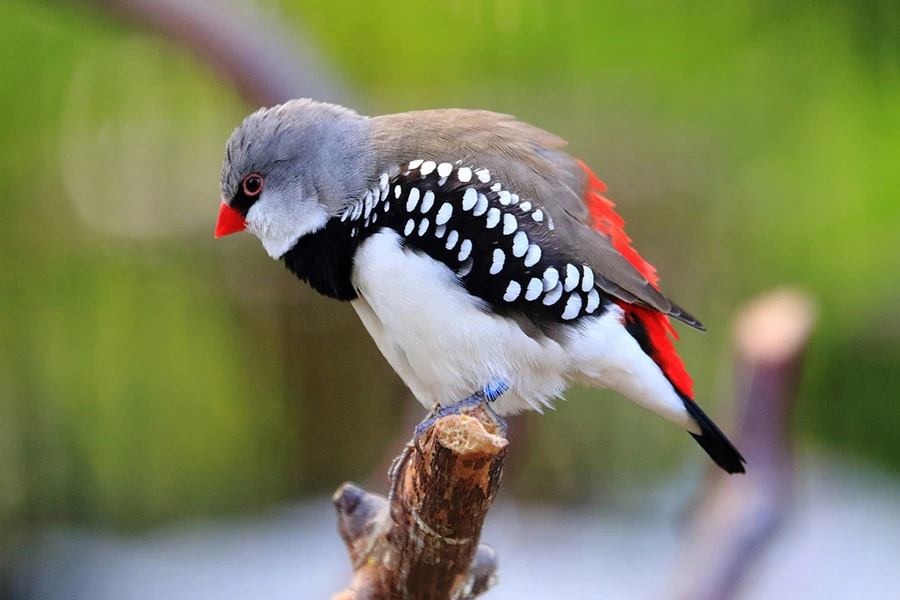
Photo: Billy liu
The Diamond Firetail is found in eastern Australia from the Eyre Peninsula, South Australia, to southeast Queensland, often located on the slopes of the Great Dividing Range. They typically inhabit eucalyptus forests, forest edges, riparian areas, agricultural lands, and natural grasslands.
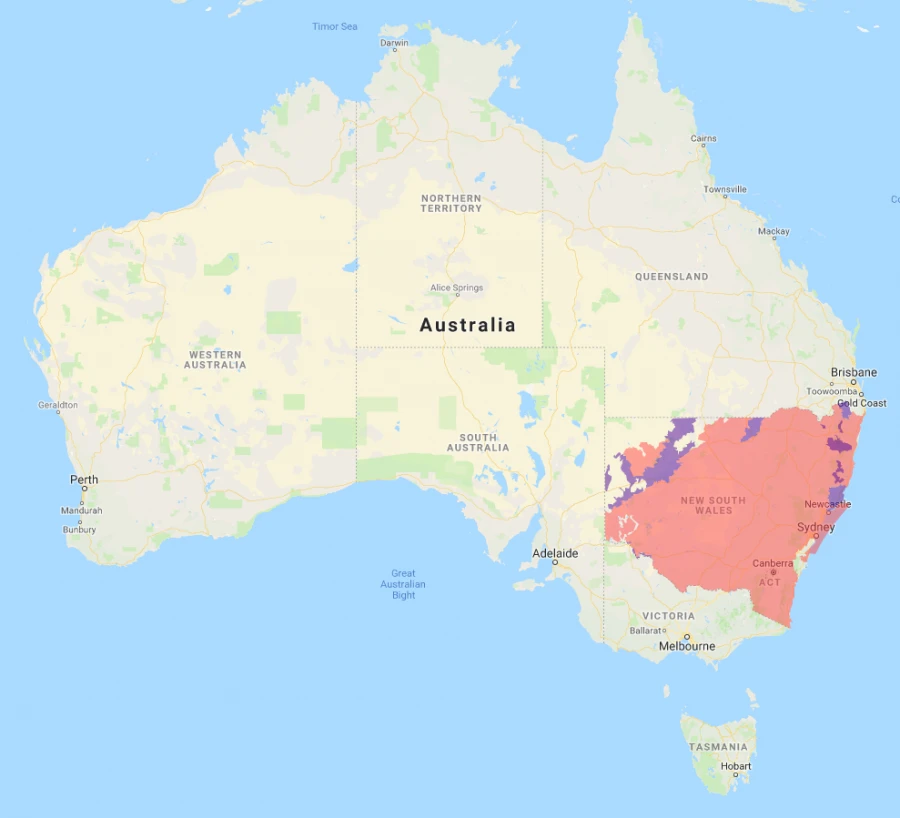
Diamond Firetail distribution map (Source: environment.nsw.gov.au)
Diamond Firetails usually forage on the ground, searching and eating grass seeds. During the breeding season, they often eat small insects. In the wild, they are often seen in flocks ranging from 5 to 40 birds and sometimes more. From mid-August to January each year, larger groups will break into smaller groups to begin the breeding season. Diamond Firetail nests are typically spherical, built in dense bushes and trees with many branches.
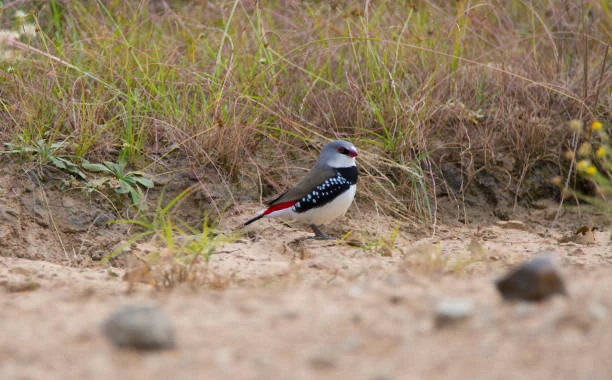
Diamond Firetails foraging on the ground.
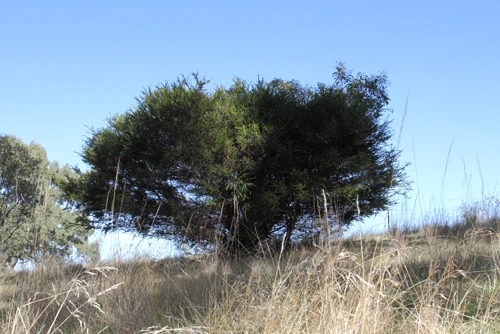
Dense bush where Diamond Firetails build their nests (Photo: GeoffPark)
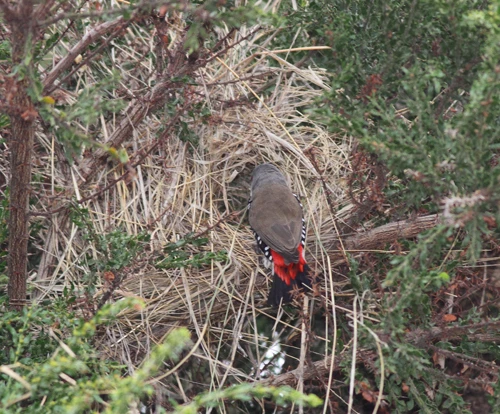
Diamond Firetail building a nest (Photo: GeoffPark)
Both male and female birds participate in nest building, but the female often weaves the interior and completes the nest before laying eggs. They use materials such as coconut fibers, paper scraps, dry grass, and feathers. During the breeding season, males attract females by holding a piece of dry grass in their beak, singing while bouncing up and down on a branch. Under normal conditions, it is relatively difficult to distinguish between males and females based on their color and appearance. Only during the mating season does the male's beak turn a deep red. Diamond Firetails mate in the nest. After mating, the female can lay about four to six eggs and incubate them with the male for 14 days. Both male and female birds participate in rearing the chicks. About 20-30 days after hatching, the chicks leave the nest. Female Diamond Firetails can begin breeding after 9 to 12 months of age. Their lifespan is usually 5 to 7 years.
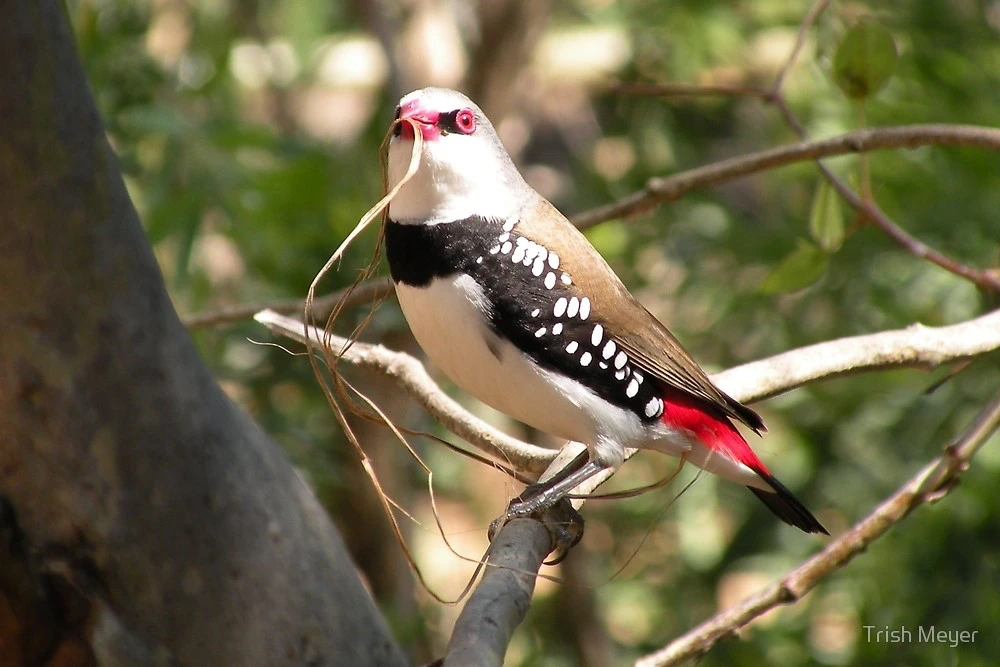
Male Diamond Firetail holding a blade of grass to court the female. (Photo: Trish Meyer)
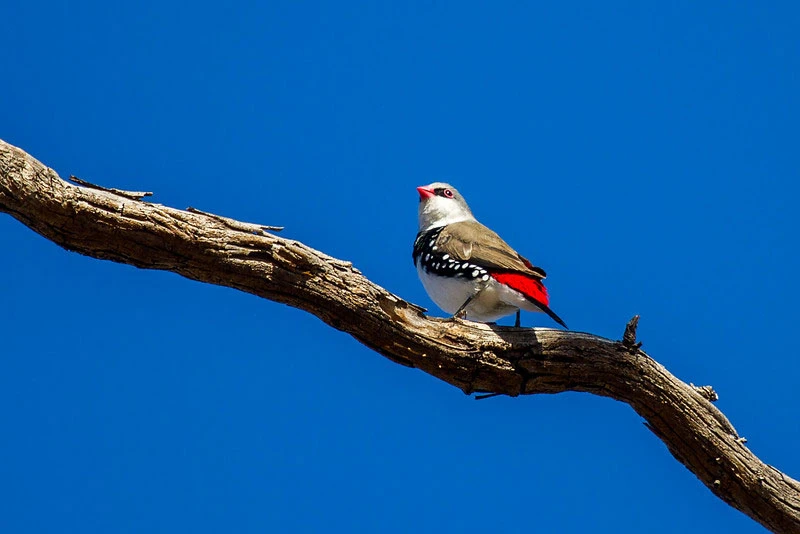
Diamond Firetail resting on a dry branch.
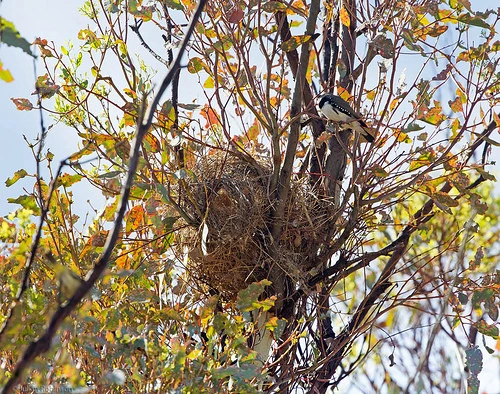
Diamond Firetail nesting on a branch. (Photo: GeoffPack)
In captivity, Diamond Firetails are bred and exhibit mutations in feather and beak colors such as Yellow Diamond, Silver Diamond, Pied Diamond, White Diamond, Fawn Diamond.
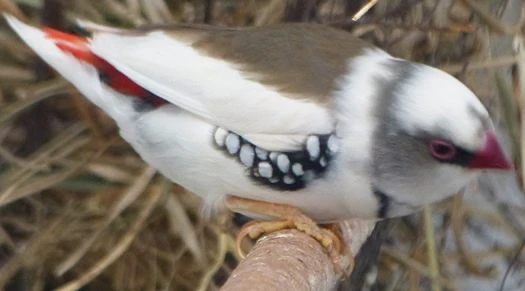
Pied Diamond Firetail. (Photo: Graham Warrender)
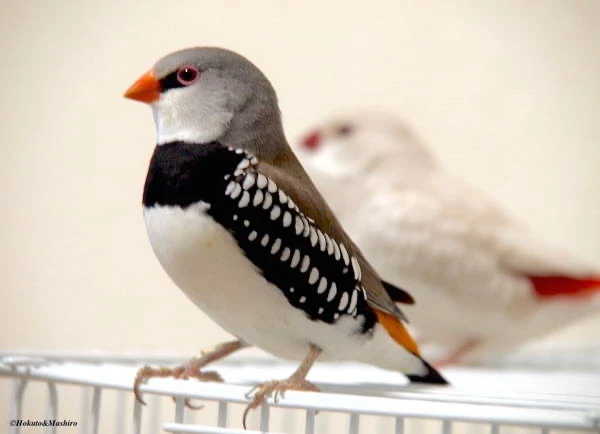
Orange-tailed Diamond Firetail (Photo: PicsWe)
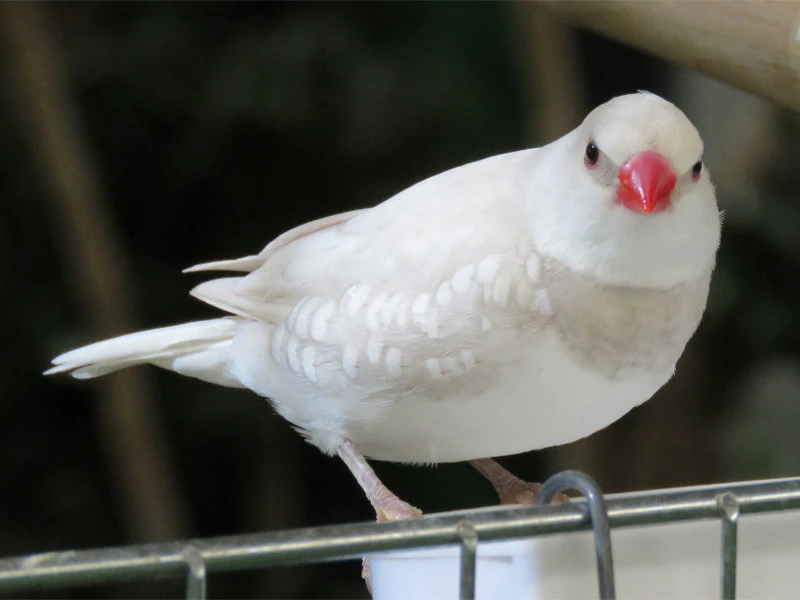
Silver Diamond Firetail (Photo: Ohmi Finch)
Nutrition for captive Diamond Firetails is relatively similar to the diet of other finch species. Details can be found in the article Nutrition for finches. During the breeding season, additional insects such as mealworms and ant eggs can be provided to improve breeding and chick rearing.
Some images of Diamond Firetails breeding at my aviary
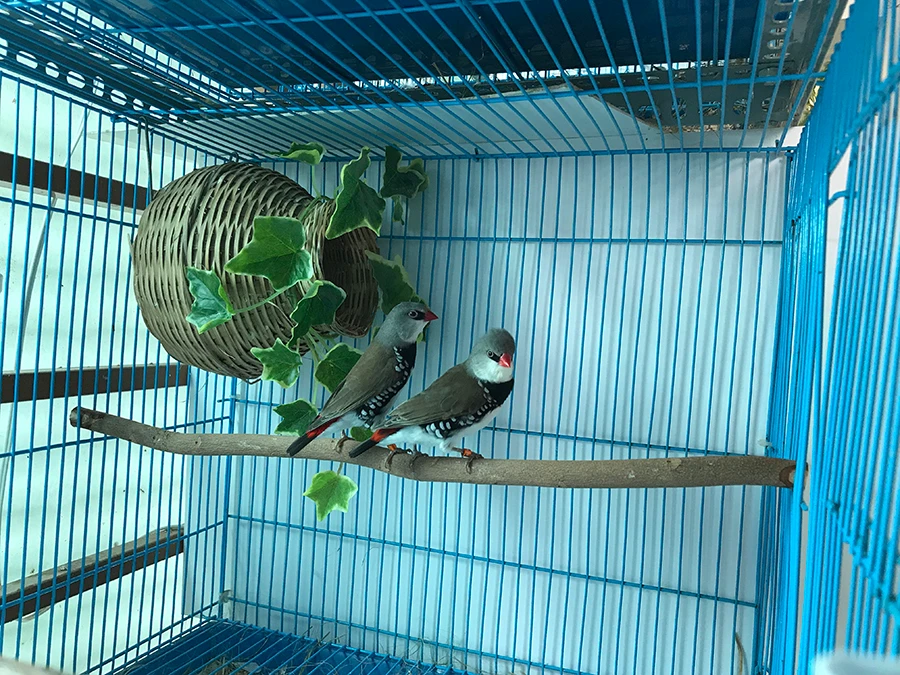
Parent Diamond Firetails.
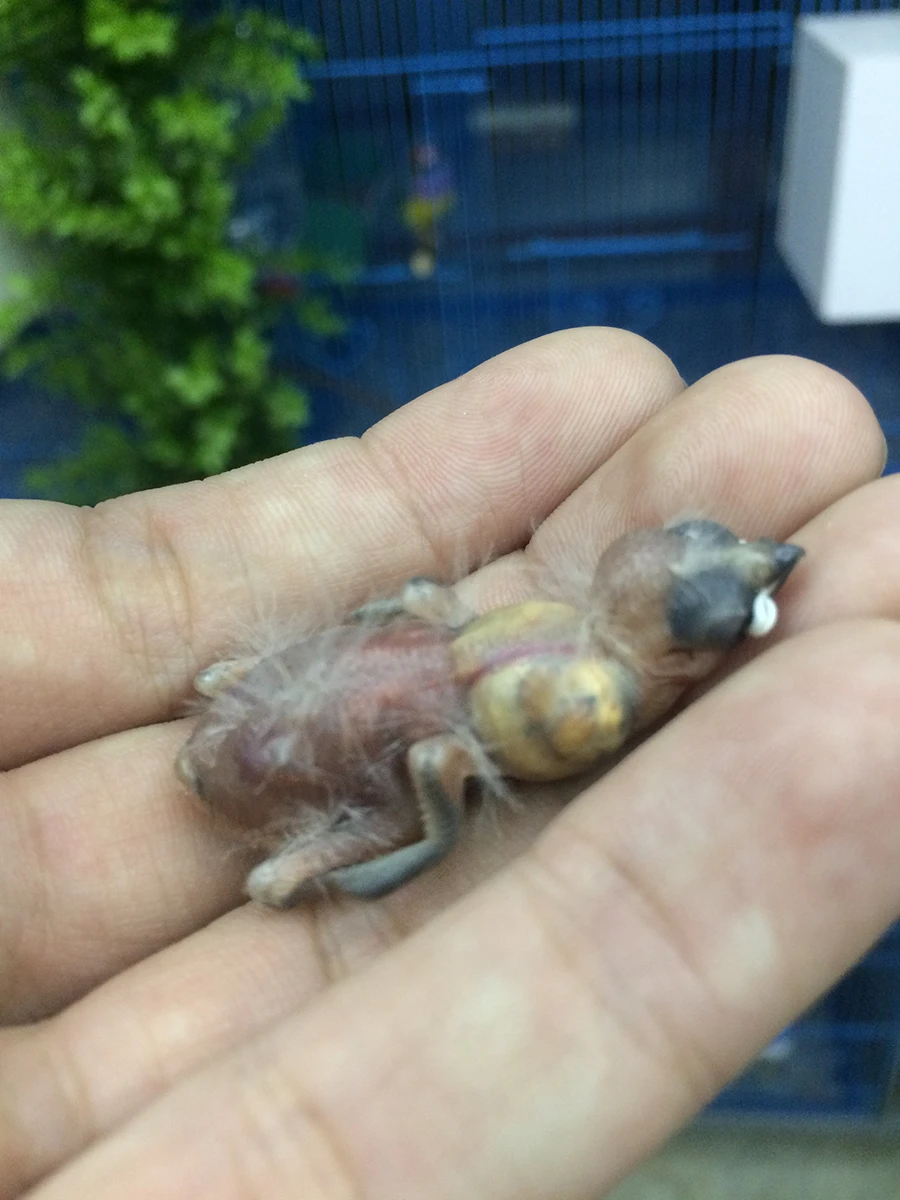
Baby Diamond Firetail under 1 week old.
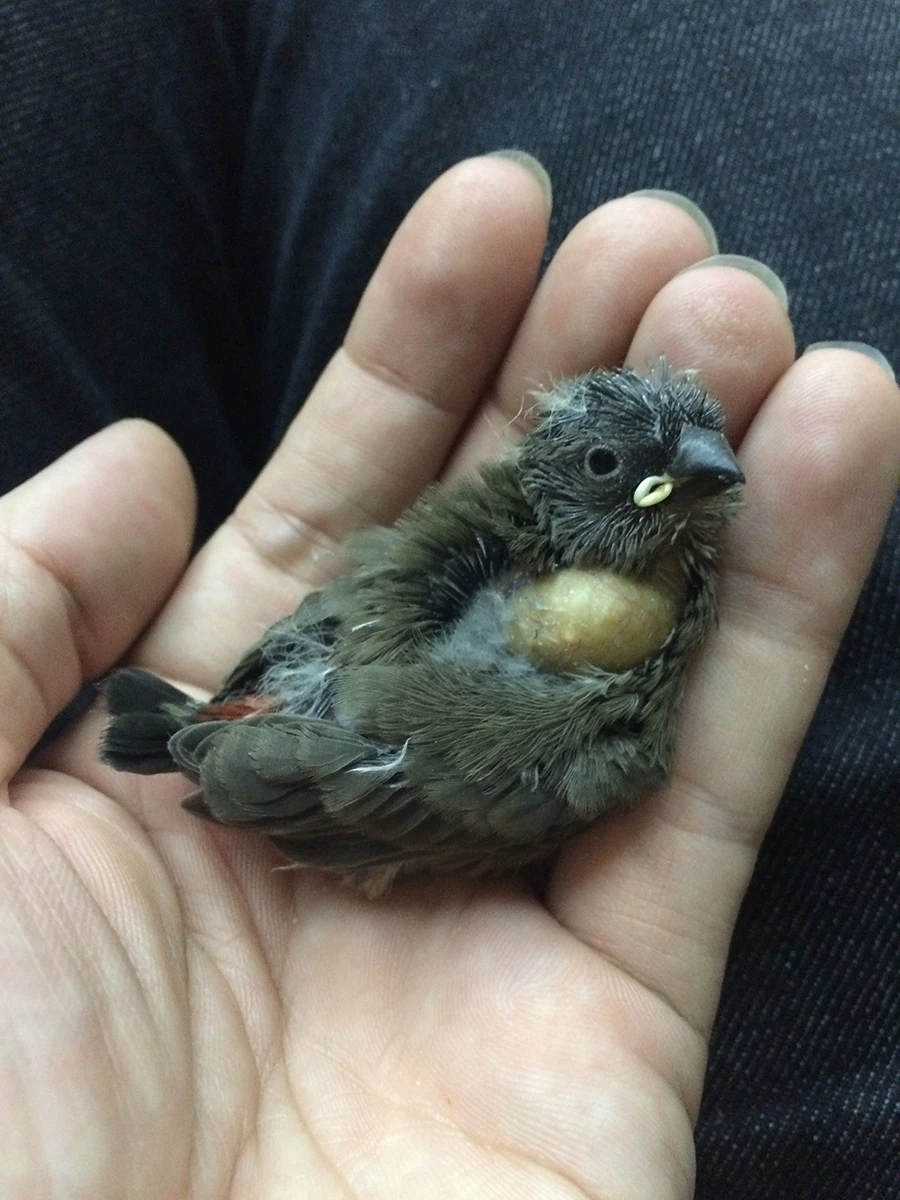
Baby Diamond Firetail starting to show red feathers on the tail tip at 2 weeks old.
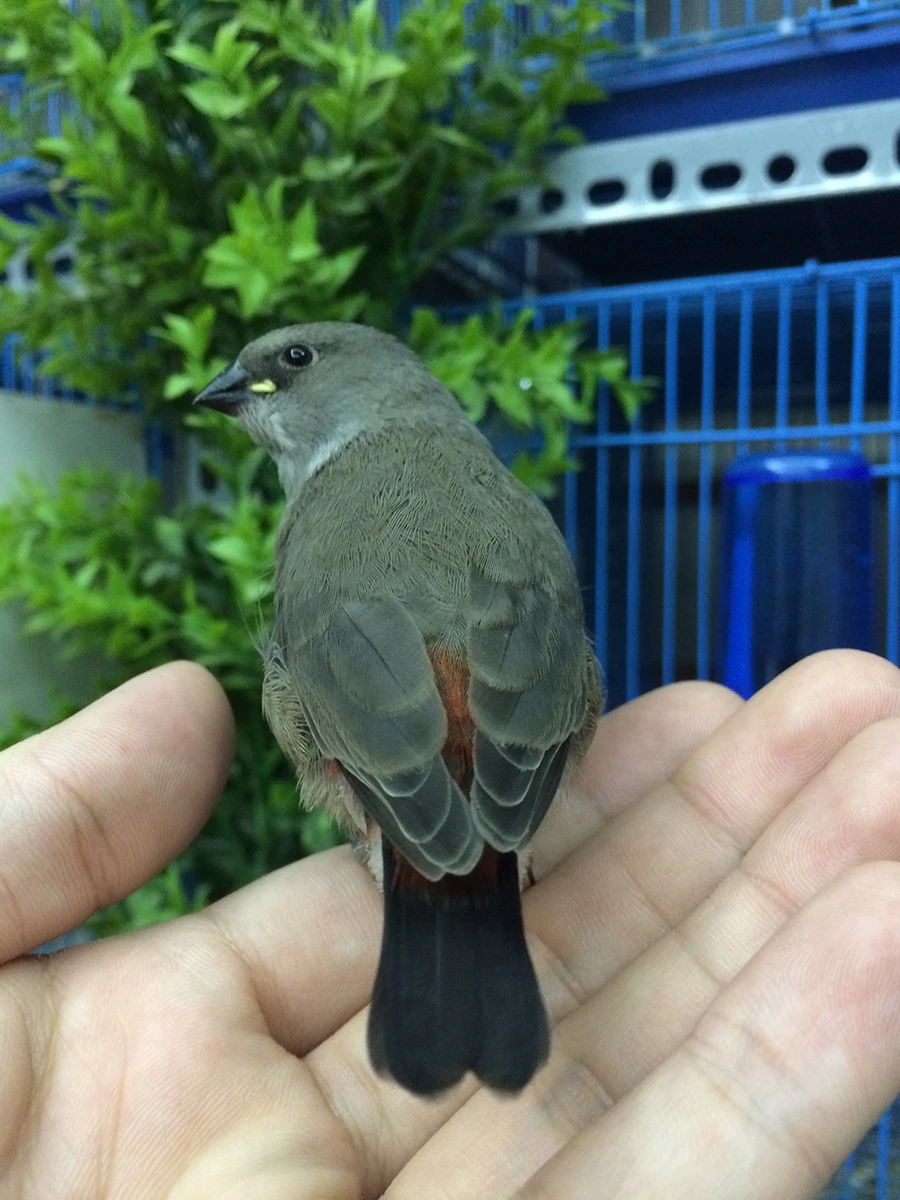
One-month-old Diamond Firetail chick starting to eat.
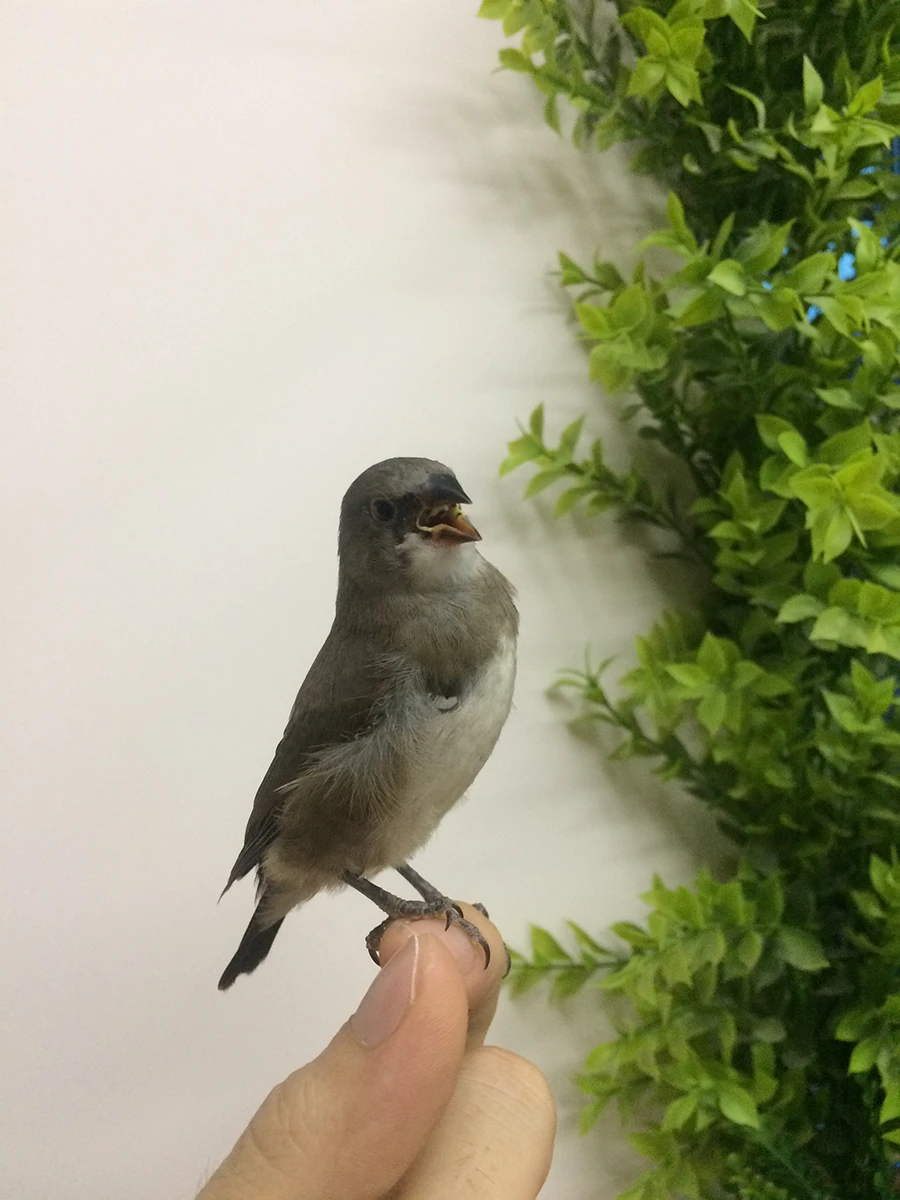
Diamond Firetail chick over 1 month old starting to show adult feathers.
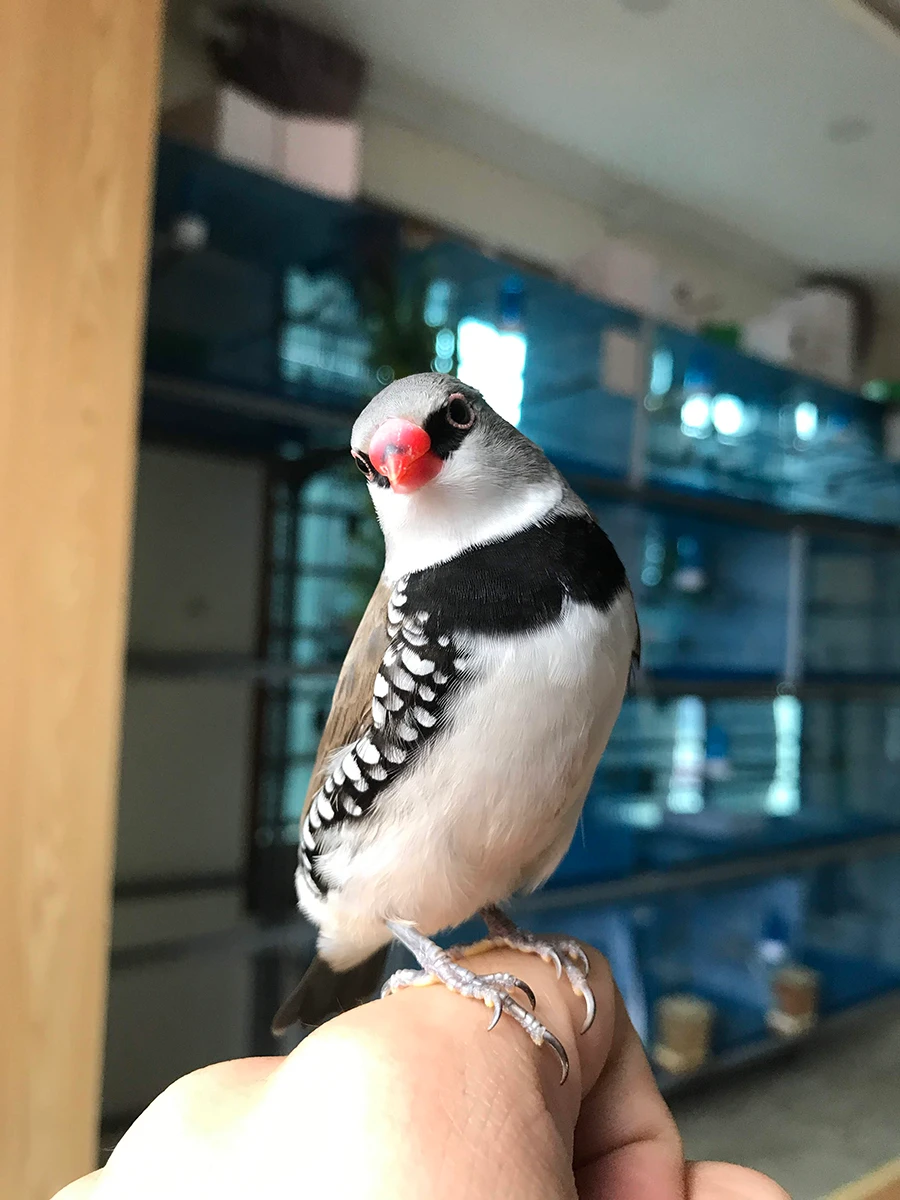
Fully grown Diamond Firetail chick after molting.
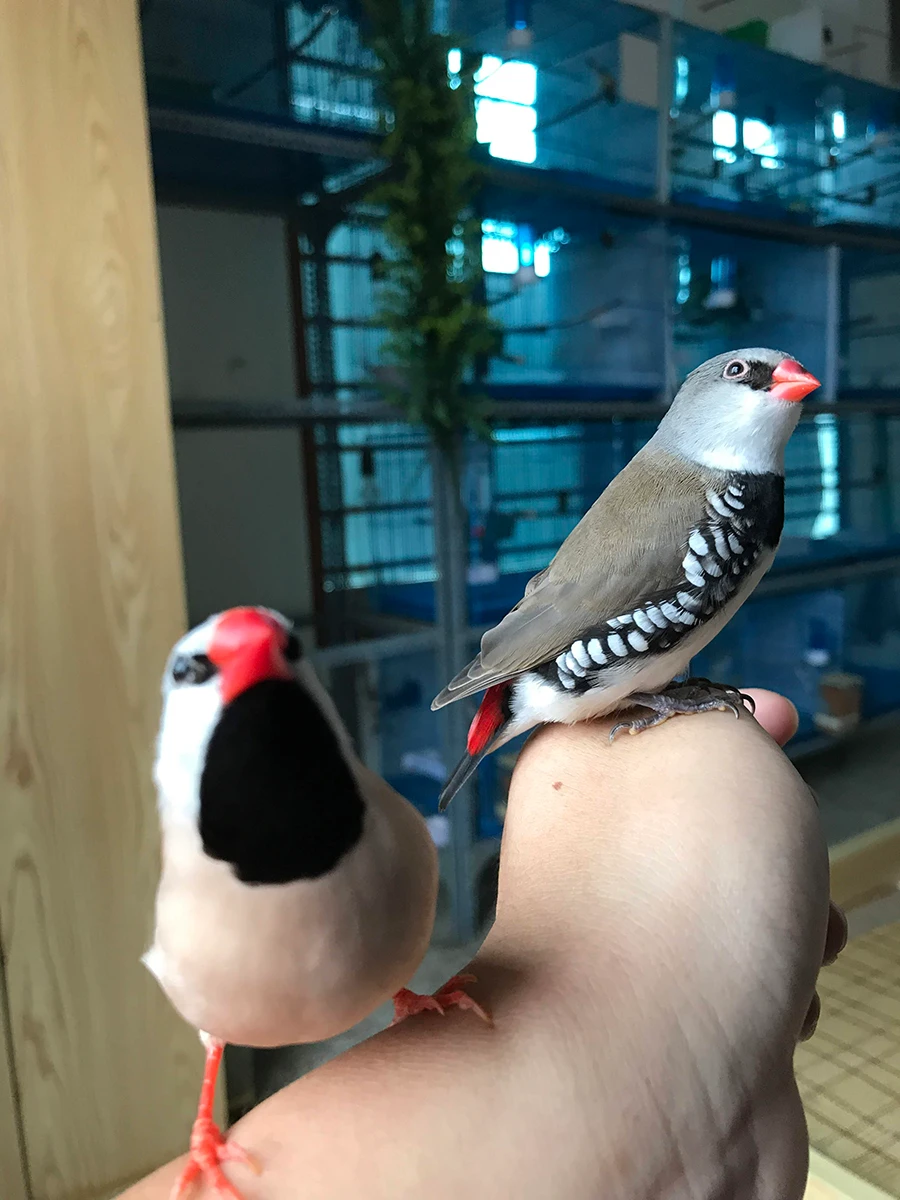
Close friends Diamond Firetail and Long-tailed Finch.
(References: Environment.nsw.gov.au, Wikipedia.com)
Relative Posts
Recent Posts
- Unlocking the Secrets of Calcium for Healthy Captive Birds
- Hand Feeding Finches
- Why Parents Toss Chicks and How to Help
- Fostering Finches: Ensuring the Survival of Your Feathered Friends
- Sunshine and Finches: A Guide for Indoor Bird Keepers
- Air Sac Mites in Finches: Understanding, Preventing, and Treating
- Introducing New Foods to Your Finch
- Homemade Finch Food Recipes
- Choosing Breeding Gouldian Finch Pairs
- How to Choose a Nest Box for Your Finches

